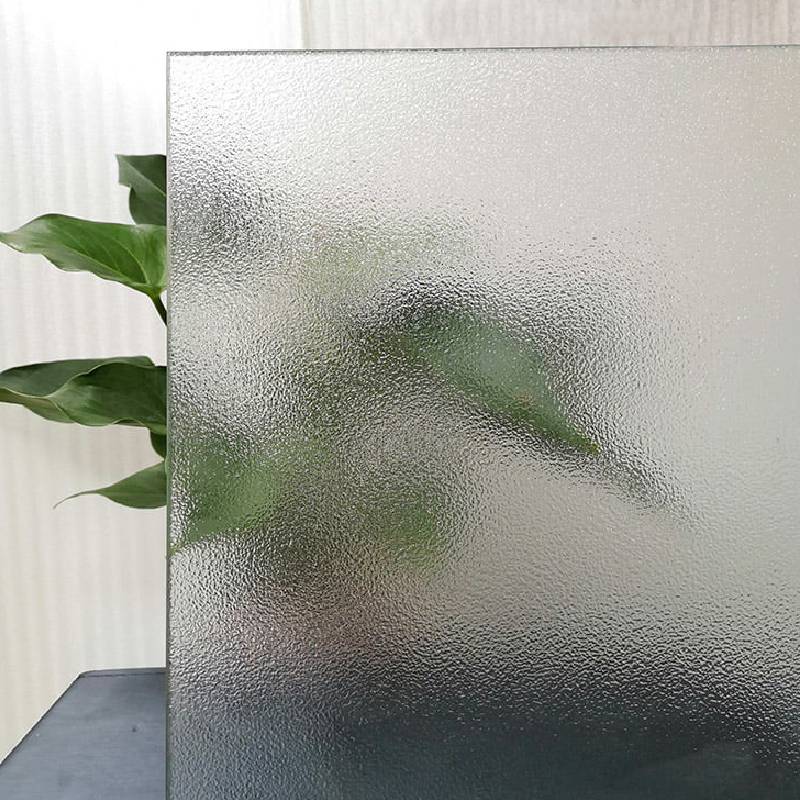The Emergence of Green Float Glass A Sustainable Solution for Modern Architecture
In recent years, the architectural and construction industries have seen a significant shift towards sustainability. Among the innovative materials gaining popularity is green float glass. This material not only enhances aesthetic appeal but also embodies a commitment to environmental responsibility. This article delves into what green float glass is, its manufacturing process, applications, and its benefits for sustainable architecture.
What is Green Float Glass?
Green float glass is a type of glass characterized by its greenish tint, a natural result of iron oxide impurities present in the raw materials used during production. Unlike tinted or colored glass, which can involve artificial dyes or coatings, the green color in float glass is intrinsic to the material itself. This subtle hue provides a unique aesthetic while allowing for high levels of light transmission, making it a popular choice for both residential and commercial buildings.
The Manufacturing Process
The production of green float glass involves a process known as the float method, developed in the 1950s by Sir Alastair Pilkington. During this process, raw materials such as silica sand, soda ash, and lime are melted at high temperatures to form molten glass. This molten glass is then poured onto a bed of molten tin, where it floats, spreading out to form a flat surface.
Once cooled, the glass is cut into sheets and may undergo additional treatments such as polishing or coating, depending on its intended use. The fundamental aspect of float glass, including its green variant, is that it can be produced in large, uniform sheets, making it incredibly versatile for various applications.
Applications of Green Float Glass
green float glass
Green float glass is used in numerous applications across the construction sector. Its aesthetic properties make it a popular choice for windows, facades, and curtain walls. Architects appreciate its ability to provide natural light while maintaining energy efficiency. Moreover, its reflective properties can help to mitigate heat gain, making buildings more comfortable for occupants while reducing reliance on air conditioning systems.
In addition to traditional architectural uses, green float glass is also utilized in the manufacturing of glass doors, glass partitions, and balustrades. Beyond commercial use, homeowners increasingly choose green float glass for residential projects due to its modern look and sustainability benefits.
Environmental Benefits
One of the primary advantages of green float glass lies in its sustainability. The production process for float glass can incorporate significant amounts of recycled glass, reducing the need for raw materials and minimizing waste. This recycling capability is crucial in the construction industry, which often produces substantial waste.
Moreover, green float glass enhances energy efficiency. Its ability to allow natural light into buildings reduces the need for artificial lighting, thus lowering energy consumption. Additionally, buildings designed with well-insulated green float glass windows can maintain comfortable interior temperatures, leading to further energy savings on heating and cooling.
Conclusion
In conclusion, green float glass represents a substantial advancement in sustainable building materials. Its unique aesthetic, coupled with its energy-efficient properties and recyclability, makes it an ideal choice for modern architecture. As designers and builders increasingly recognize the importance of environmental responsibility, materials like green float glass will undoubtedly play a pivotal role in shaping a sustainable future.
The transition towards greener materials not only benefits the environment but also enhances the quality of life for occupants. As we continue to explore innovative solutions in construction and design, green float glass stands out as a shining example of how industry and sustainability can harmoniously coexist. Through the adoption of such materials, we can create beautiful, functional, and sustainable spaces that reflect our commitment to a greener planet.
 Afrikaans
Afrikaans  Albanian
Albanian  Amharic
Amharic  Arabic
Arabic  Armenian
Armenian  Azerbaijani
Azerbaijani  Basque
Basque  Belarusian
Belarusian  Bengali
Bengali  Bosnian
Bosnian  Bulgarian
Bulgarian  Catalan
Catalan  Cebuano
Cebuano  Corsican
Corsican  Croatian
Croatian  Czech
Czech  Danish
Danish  Dutch
Dutch  English
English  Esperanto
Esperanto  Estonian
Estonian  Finnish
Finnish  French
French  Frisian
Frisian  Galician
Galician  Georgian
Georgian  German
German  Greek
Greek  Gujarati
Gujarati  Haitian Creole
Haitian Creole  hausa
hausa  hawaiian
hawaiian  Hebrew
Hebrew  Hindi
Hindi  Miao
Miao  Hungarian
Hungarian  Icelandic
Icelandic  igbo
igbo  Indonesian
Indonesian  irish
irish  Italian
Italian  Japanese
Japanese  Javanese
Javanese  Kannada
Kannada  kazakh
kazakh  Khmer
Khmer  Rwandese
Rwandese  Korean
Korean  Kurdish
Kurdish  Kyrgyz
Kyrgyz  Lao
Lao  Latin
Latin  Latvian
Latvian  Lithuanian
Lithuanian  Luxembourgish
Luxembourgish  Macedonian
Macedonian  Malgashi
Malgashi  Malay
Malay  Malayalam
Malayalam  Maltese
Maltese  Maori
Maori  Marathi
Marathi  Mongolian
Mongolian  Myanmar
Myanmar  Nepali
Nepali  Norwegian
Norwegian  Norwegian
Norwegian  Occitan
Occitan  Pashto
Pashto  Persian
Persian  Polish
Polish  Portuguese
Portuguese  Punjabi
Punjabi  Romanian
Romanian  Russian
Russian  Samoan
Samoan  Scottish Gaelic
Scottish Gaelic  Serbian
Serbian  Sesotho
Sesotho  Shona
Shona  Sindhi
Sindhi  Sinhala
Sinhala  Slovak
Slovak  Slovenian
Slovenian  Somali
Somali  Spanish
Spanish  Sundanese
Sundanese  Swahili
Swahili  Swedish
Swedish  Tagalog
Tagalog  Tajik
Tajik  Tamil
Tamil  Tatar
Tatar  Telugu
Telugu  Thai
Thai  Turkish
Turkish  Turkmen
Turkmen  Ukrainian
Ukrainian  Urdu
Urdu  Uighur
Uighur  Uzbek
Uzbek  Vietnamese
Vietnamese  Welsh
Welsh  Bantu
Bantu  Yiddish
Yiddish  Yoruba
Yoruba  Zulu
Zulu 

